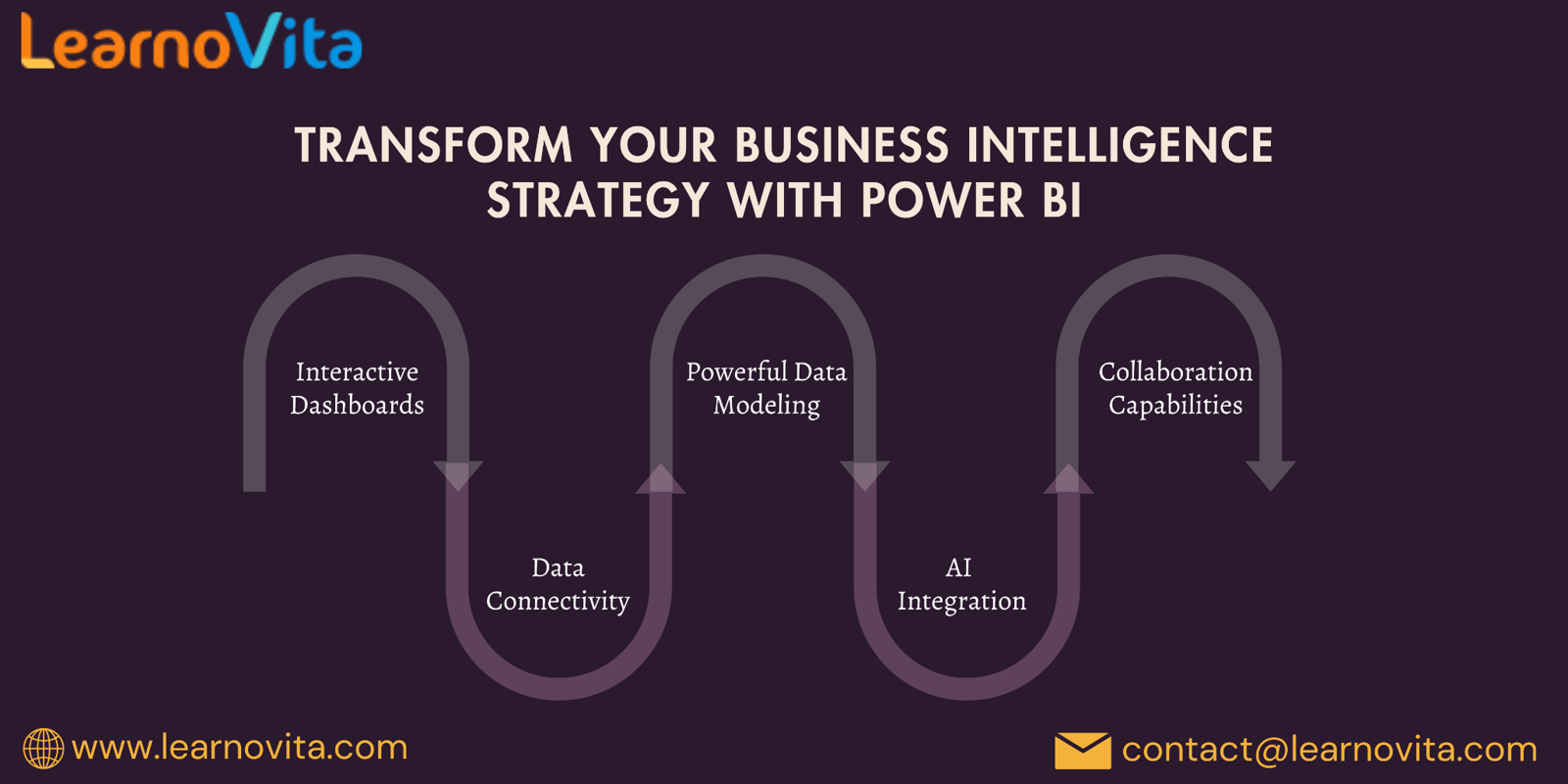In an age where data drives decision-making, having a robust business intelligence (BI) strategy is essential for organizations looking to stay competitive. Microsoft Power BI has emerged as a game-changer, offering powerful tools to help businesses turn data into actionable insights. This blog explores how you can transform your business intelligence strategy with Power BI.
If you want to excel in this career path, then it is recommended that you upgrade your skills and knowledge regularly with the latest Power BI Course in Bangalore.

Understanding Power BI
Power BI is a cloud-based suite designed to help users visualize their data and share insights across their organization. With its user-friendly interface and powerful analytics capabilities, Power BI enables businesses to make data-driven decisions quickly and effectively.
Why Transform Your BI Strategy?
Rapid Decision-Making: In today’s fast-paced environment, timely insights are crucial. A well-implemented BI strategy with Power BI allows organizations to access real-time data, facilitating quicker decision-making.
Data-Driven Culture: By integrating Power BI into your operations, you foster a culture that values data. Employees at all levels can analyze information and contribute to strategic discussions.
Enhanced Collaboration: Power BI’s sharing capabilities enable teams to collaborate effortlessly. Stakeholders can access dashboards and reports, ensuring everyone is aligned with the organization’s goals.
Key Steps to Transform Your BI Strategy with Power BI
1. Define Clear Objectives
Start by identifying your business goals. What questions do you want to answer? What metrics are most important to your organization? Having clear objectives helps tailor your Power BI implementation to your specific needs.
2. Assess Your Data Sources
Evaluate the data sources you currently use. Power BI can connect to a wide array of sources, including Excel, SQL databases, and cloud services. Ensure you have access to the relevant data for effective analysis.
3. Build a Data Model
Creating a robust data model is essential for meaningful analysis. Power BI allows you to establish relationships between different data sets, enabling deeper insights. Use features like calculated columns and measures to enhance your model’s capabilities.
4. Create Engaging Visualizations
Once your data model is ready, utilize Power BI’s visualization tools to create interactive reports and dashboards. Experiment with various chart types and formats to find the most effective way to present your data.
With the aid of Power BI Certification Course programs, which offer comprehensive training and job placement support to anyone looking to develop their talents, it’s easier to learn this tool and advance your career.

5. Share and Collaborate
Power BI makes it easy to share insights across your organization. Publish dashboards to the Power BI service and set up permissions to control access. Encourage team members to engage with the data and provide feedback.
6. Monitor and Iterate
BI is not a one-time project; it requires continuous improvement. Regularly review your dashboards and reports to ensure they remain relevant. Gather insights from users and make adjustments based on their feedback.
Benefits of a Transformed BI Strategy
Informed Decision-Making: With access to real-time data and insights, businesses can make informed decisions that enhance operational efficiency and drive growth.
Increased Agility: A dynamic BI strategy allows organizations to respond swiftly to market changes, ensuring they remain competitive.
Cost Savings: By streamlining data analysis and reporting processes, businesses can reduce operational costs and allocate resources more effectively.
Enhanced Customer Experience: Understanding customer behavior through data analysis enables organizations to tailor their offerings, improving customer satisfaction and loyalty.
Conclusion
Transforming your business intelligence strategy with Power BI can significantly enhance how your organization utilizes data. By implementing clear objectives, building robust data models, and fostering a data-driven culture, you can unlock the full potential of your data. Embrace the power of Power BI today and take your business intelligence strategy to new heights!


Write a comment ...